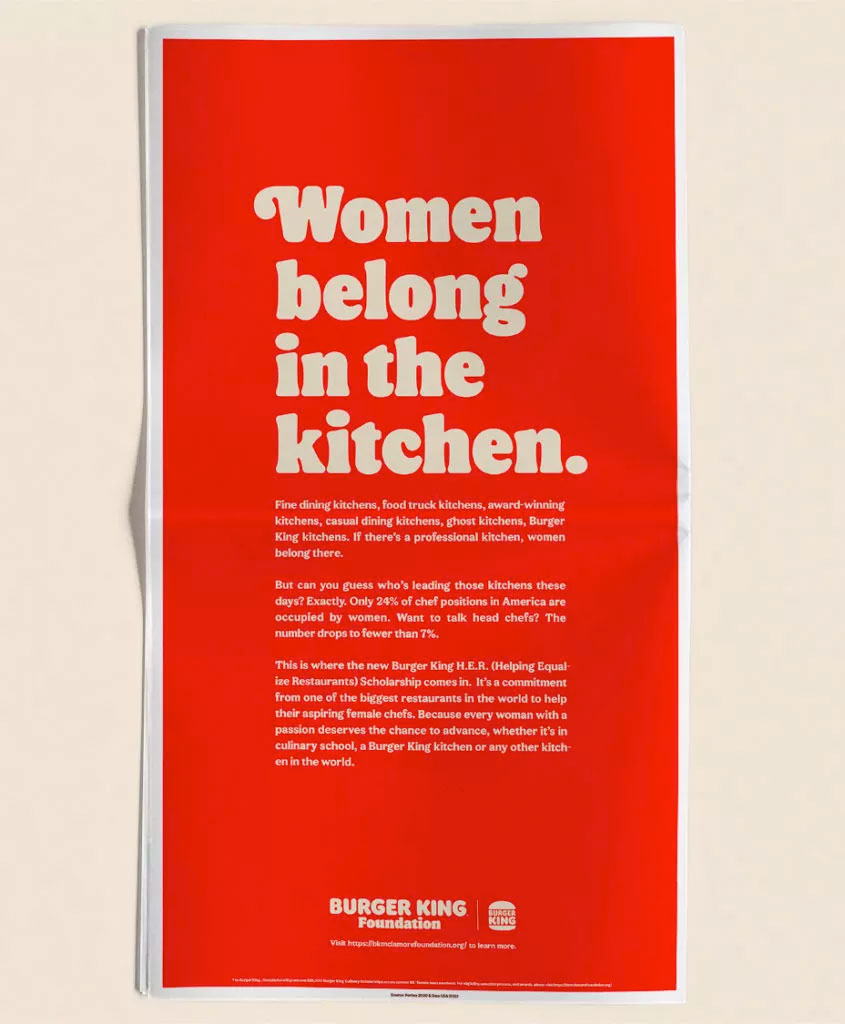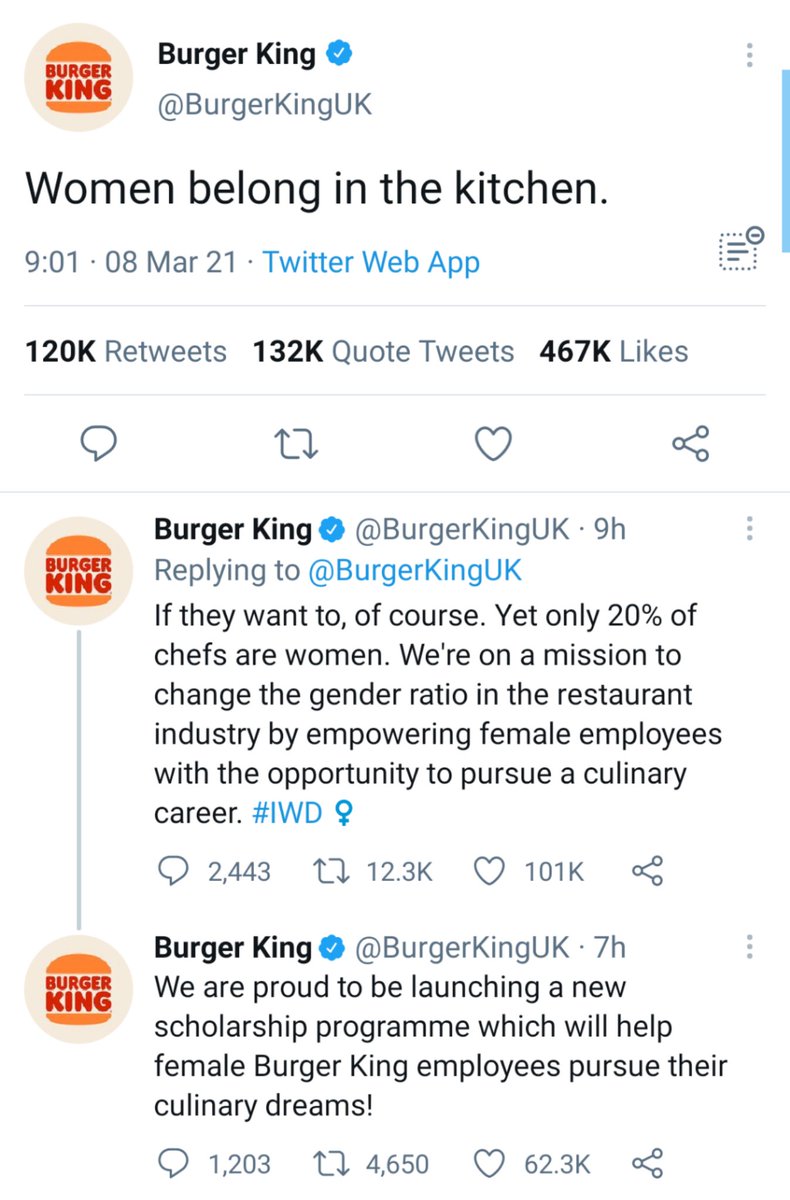March 15, 2021
Social is a very visual medium, so why are brands still doing a bad job at communication through design? Whether it’s a boring, wallpaper image, or a message which doesn’t translate from print to social (we’re looking at you, Burger King), there’s no reason brands can’t take the time to consider how to utilise design in their social media.
…
OK, let’s do it, and yes, we know everyone has been talking about that tweet from Burger King, but not everyone is telling the whole story. Coming from a background in integrated marketing, my hunch is that this idea was created for a press ad – and look at that, it works in this medium!
And hey, guess what, when they moved it to social, it also worked on Instagram!
View this post on Instagram
But as text only on Twitter? With a massive 2-hour delay in posting the second, FAR more important part to the message? FAIL.
Chantal El Bikai, immediate future’s Senior Digital Designer, says:
“Having something visual to convey your message is KEY when it comes to social media, Burger King managed to do this *so well* with their print and Instagram posts but failed horribly with their Twitter thread. Whilst it was the same message, the visual really made you stop, look and think rather than stop and react. Using design to talk about issues, injustices, and highlight what your brand is about is something we all need to be mindful of. What does this design or visual say about the brand? What’s the message? What makes the brand stand out in a sea of endless scrolling? Burger King went the route of a bold outdated statement, followed by a meaningful statistic underneath, grabbing our attention and highlighting what was wrong through a well thought out, albeit simple, image.”
Here’s something to bear in mind, brand marketers – not all social media consultants / managers / experts are created equally. At IF, we have a team who’ve joined the business from many different backgrounds – PR, TV, Integrated, Events, B2B Tech, FMCG and more. So when we’re working with a client, it’s never *just* about the social execution! We want to know what else you’re doing, how we can add touchpoints for the audience via social, or what we need to do to adjust the messaging or content type to be audience-first, social-first and NOT BORING!
Being authentic means communicating your values
There are many marketing trends we could focus on this year, but certainly one of the biggest for social is that brands will be held accountable for their actions and activity on social and beyond. They are being pushed to be more authentic, more human, and let me tell you there’s very little room for mistakes.
When it comes to being seen as an organisation your audience is happy to engage with, often we’ll look to showcase the story behind the brand on social media. It’s an ideal medium for storytelling – we’ve got everything in our wheelhouse, video long and short, text of course, but also audio, be it music, sound or speech.
Let’s take sustainability as a topic – few brands are able to say they are fully sustainable, but many have some great stories to tell about how they are working hard towards changing their business for good.
“In terms of visuals and the perception of eco-friendly and sustainability – we can absolutely do this with design, bringing in natural textures, things like leaves, wood, and forestry to denote nature. We can also go a super simple and minimalistic route by making the design clean and fresh, rather than using an image of grass or mud we can use those earthy tones to showcase eco vibes. These visual cues make it easier for a consumer to understand that this specific brand is earth-friendly. We can say a lot with the feeling and tone of an image without outright saying “WE ARE SUSTAINABLE”. Take for example chocolate tins, you’re more likely to keep a beautifully designed tin with subtle branding (thinking of the Hotel Chocolat Easter egg tin), using it as storage, or for keeping those buttons and sewing needles hidden .
Jokes aside, it’s a great way for brands to minimise waste, make things we can actually use long after the chocolate has been devoured.”
-Chantal El Bikai, Senior Digital Designer, immediate future
So, brands, we challenge you to find stories worth telling in your organisation, and then carefully consider how the design elements on social can help you tell them.
p.s. If you’d like us to guide you in this, we’re here to help! Contact us



